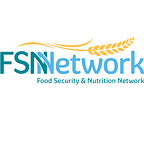Nourishing Inclusion: Committing to Gender and Youth in the Food Crisis
By: Savannah Smith, Gender and Youth Activity
Lisez ce blog en français ici.
Photo courtesy of Luisa Dörr / Save the Children
Did you know that the UN reported a new world record in 2023? Unfortunately, it’s a bad one.
This year, 349 million people across 79 countries are facing acute food insecurity — the highest ever recorded. Since the beginning of the COVID-19 pandemic, and exacerbated by the situation in Ukraine and Russia, food prices around the world have skyrocketed, reaching an all-time high in April 2022. The compounding forces of COVID-19, climate change, conflict, and rising food costs continue to have a devastating global impact, especially on the lives of women and youth.
Between the rising cost of food and the declining farm outputs, households around the world are struggling to feed themselves. Women farmers produce 60–80% of food in the Global South and are responsible for half of the world’s food production. But with costs rising and lack of access to labor-saving technologies, women and youth are doing most of the labor-intensive, manual farm work. Despite this work, the decline in agricultural outputs mean women are now working even more for even less money.
Photo courtesy of Sacha Myers / Save the Children
Women and Youth Suffer the Most
Evidence shows that women and youth are more negatively affected by food crises. Why? Due to unequal power dynamics and patriarchal traditions, when there is not enough food to go around, women and youth typically eat less. But the negative impacts of the food crisis extend far beyond food consumption.
- In 2021, 31.9% of women were moderately to severely food insecure, compared to 27.6% of men. And this gender gap in hunger is widening. Likewise, women are more likely to live in poverty. There are 122 women for every 100 men (aged 25 to 34) living in extreme poverty and this gender poverty gap is rising at an alarming rate.
- Hunger is particularly harmful to children, who are more vulnerable to disease and illness when poorly nourished. Experts estimate that every year, 3.1 million children under five die from undernutrition, accounting for almost 50% of child mortality.
- When households struggle with acute hunger, gender-based violence soars, and adolescents are more likely to engage in risky coping strategies, such as migration.
- Young girls find themselves at the intersection of gender and youth vulnerability. In 2021, data from the Wadata food security project in Niger showed that girls between six months and five years old were twice as likely as boys to experience moderate acute malnutrition.
- Girls also face complex social consequences of crises. When money is tight, girls are more likely to be forced to drop out of school. This curtails their long-term well-being and future prospects while increasing their exposure to gender-based violence.
Women and youth are disproportionately affected by these crises, thus, they must be a part of the solution.
Photo courtesy of Mustafa Saeed / Save the Children
Committing to Inclusion
In September 2022, the USAID/BHA-funded Gender and Youth Activity (GAYA) hosted a participatory discussion for implementers to reflect on lessons learned from gender and youth programming during the last few years of massive global shocks and stresses. Collectively, webinar participants defined commitments organizations can make to reduce the unequal impact of food crises on marginalized populations, with a focus on women and youth. These nine commitments are:
- Meaningfully engage women and youth to promote their agency within programs and within their communities.
- Improve data collection to consider the intersection of gender and age to design useful, informed programs that respond to a diagnosis of needs.
- Perform regular analysis of and reflection on data, updating gender and youth analyses to understand the unique needs of different groups better.
- Implement transformative programming that addresses social norms and power dynamics related to gender and age.
- Incorporate lessons learned from previous projects to avoid repeating mistakes.
- Develop standalone budgets for gender and youth interventions and integration. Where possible, adopt funding flexibility for adaptive management, including allocating funds for grassroots organizations.
- Reinforce collaboration among programs and move beyond sectoral siloes in approaches.
- Engage the private sector more intentionally, especially with respect to youth.
- Support safe migration as a tool for youth and ensure skills acquisition for those migrating.
But… What does that look like?
The Nourishing Inclusion blog series will highlight how these commitments are implemented in food security programs across the world. Program staff from Save the Children, Mercy Corps, CARE, Catholic Relief Services (CRS), ACDI/VOCA, and more will share stories of their work, highlighting actions taken to promote inclusivity and lessons learned along the way. Follow along to hear how implementers commit to inclusion during a food crisis, not just through words but in action.
Photo courtesy of Luisa Dörr / Save the Children
Get Involved
Do you have an example of how your organization has committed to inclusion in the food crisis to share? We’d love to hear about it! Send them to gaya@savechildren.org.
